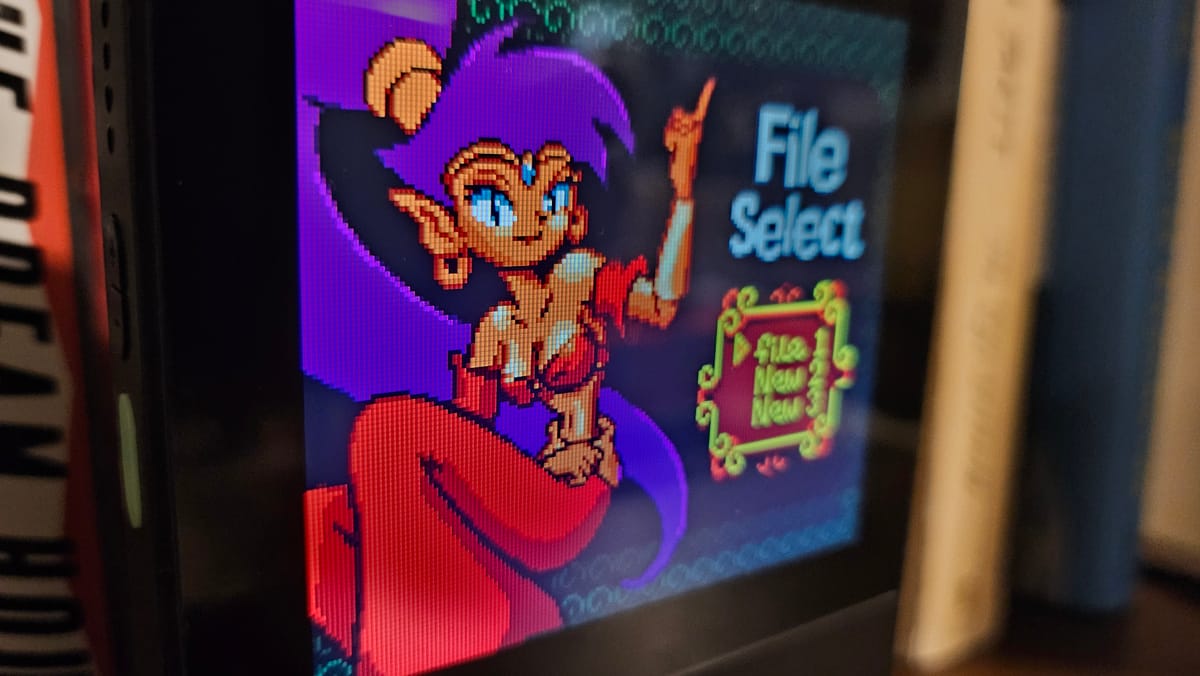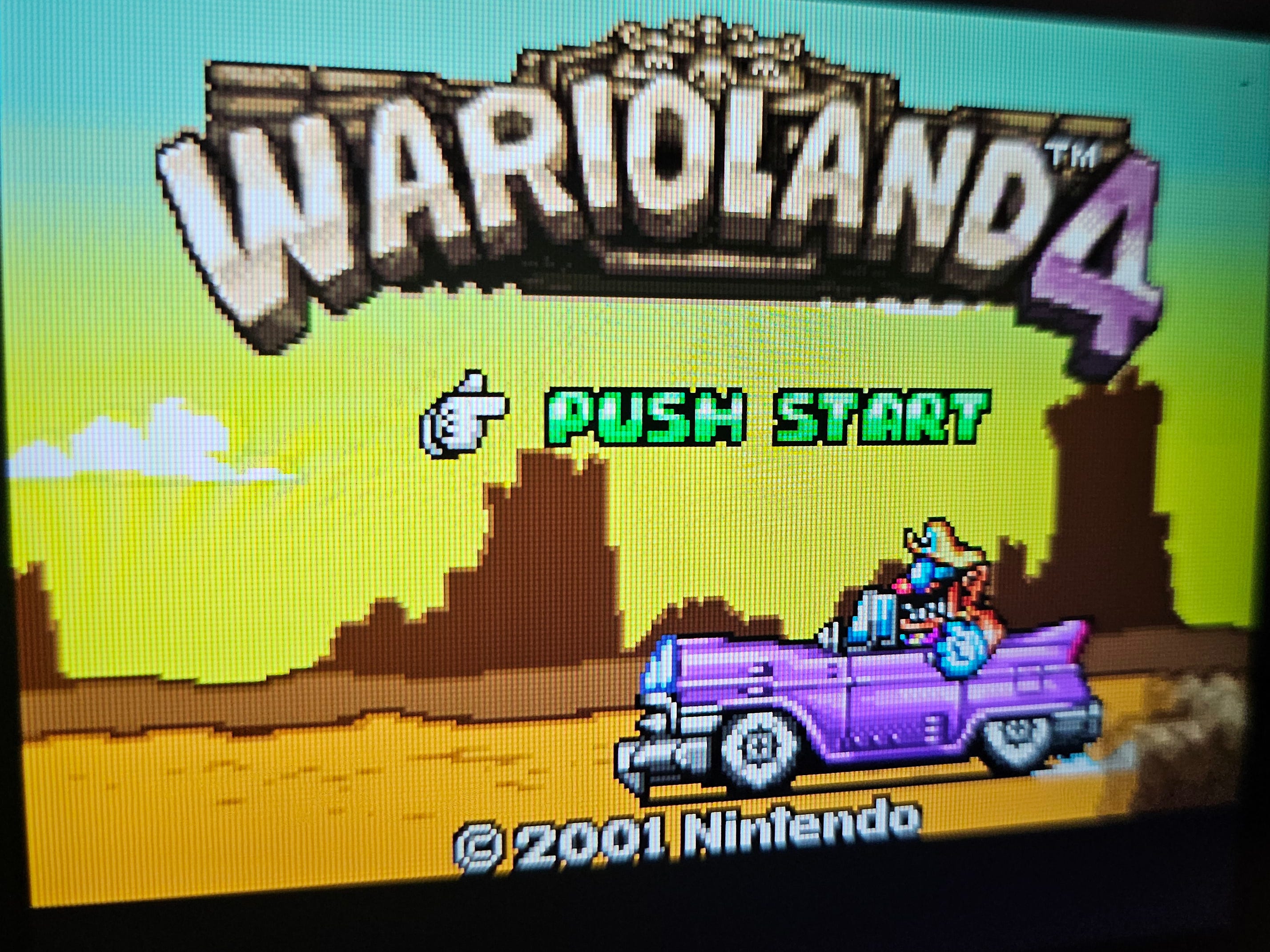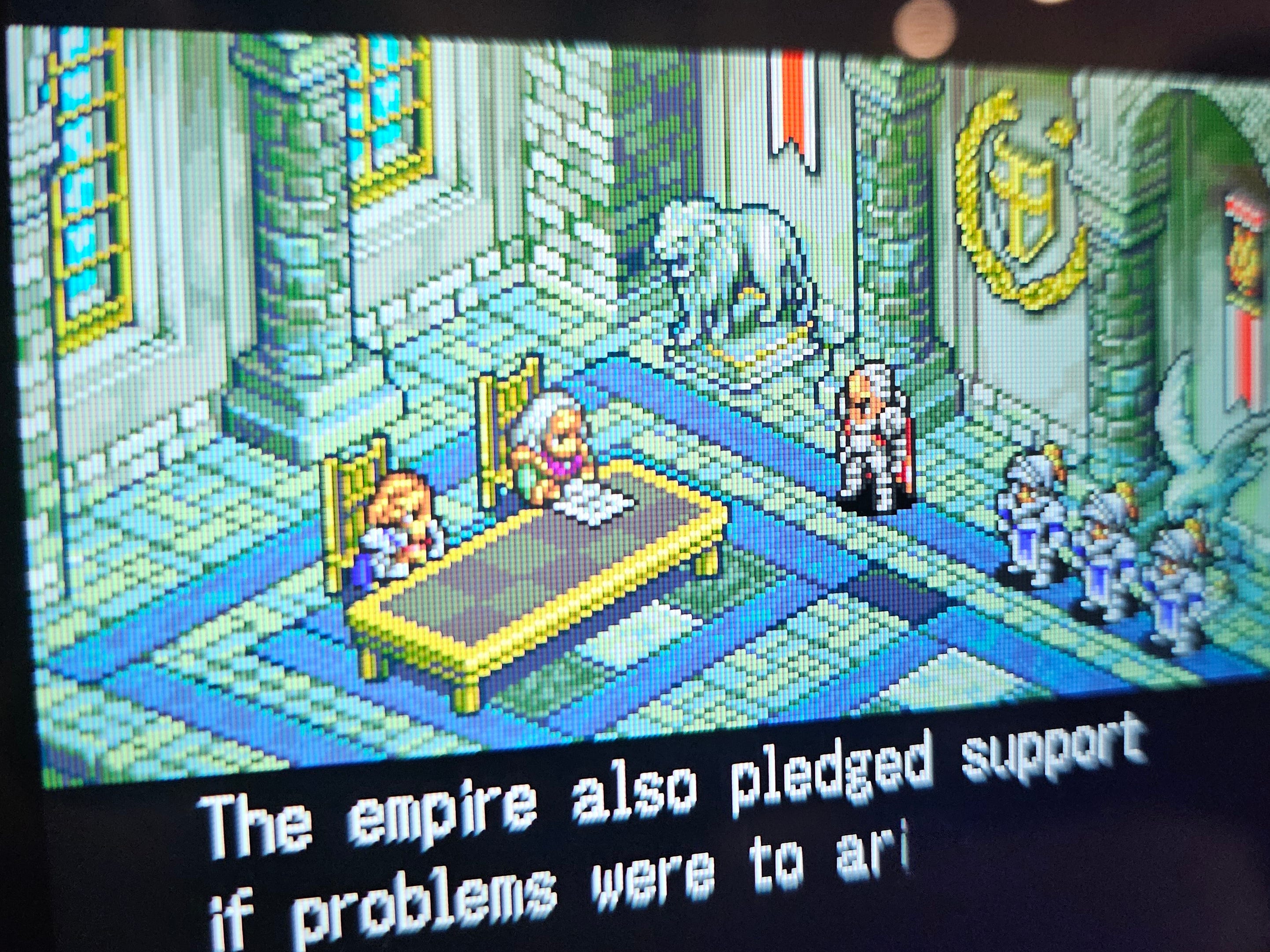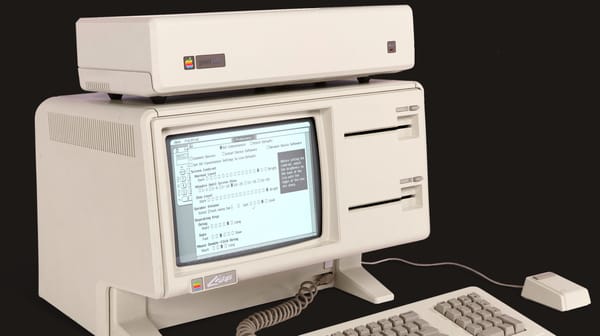The 2023 send-off: Substack's Nazi problem and a quick guide to the Analogue Pocket's new display modes
Time to find a new home for Read Only Memo in 2024? Probably! Let's talk about why.

Good news, everyone! We did it: we made it to the end of 2023, or at least made it through 364 of those 365 days. If you’re reading this issue of ROM in a timely fashion, you just have to make it through one more day without falling into an open manhole or eating that last gut-busting holiday cookie. Be on your guard. Stay indoors and play videogames. Enjoy Analogue’s very spiffy display modes finally being available in OpenFPGA, if you happen to have a Pocket!
That’s what I’m doing, alongside finishing up that Parasite Eve playthrough I started and referenced in this very newsletter a few months back. It’s the end of the year, and that means it’s the time for wrapping up unfinished business. So instead of a normal issue this week, I’m taking a bit of a break and sending a shorty your way, touching on the biggest end-of-year news to do with both emulation and Substack:
- A quick guide to enable the Analogue Pocket’s display modes on OpenFPGA cores, plus an overview of what’s not working just yet
- What 2024 holds for Read Only Memo, and whether that holding will be on Substack
I hope everyone has had a great last couple weeks of the year filled with some quality make-up gaming time. I enjoyed spending some of this week I normally would’ve spent newsletter writing eating (steak and crab and grits and chocolate and sushi and oh god the homemade bún bò huế) and drinking (you gotta make this aged eggnog, I’m telling you) and learning how to set up an Unreal Tournament 2004 server, cuz better late than never. I don’t often make New Years Resolutions, but this year I’m making one: in 2024, I will ~instagib~.
I promised myself I’d keep this short, but here’s one last THANK YOU for reading this year; it’s been a delight to find a group of people out there who want to read as much about emulation as I want to write about it. More to come!
The Big Two
1. Get them Analogue Pocket display modes in your OpenFPGA cores stat

I considered sending out a short ROM on this topic earlier in the week, when it wasn’t absolutely dead simple just yet to get Analogue’s excellent filters enabled for every OpenFPGA core. Well, I drank more eggnog instead of doing that, so this advice is coming in a biiiit late. But if you have a Pocket and haven’t updated it yet, let me reassure you — it’s worth the five minutes of effort! Here’s all you need to do:
- Put Pocket Updater on your Analogue Pocket microSD card if you don’t have it already and run the .exe.
- Run the “update all” command to have Pocket Updater do all the work for you, updating your system firmware to 2.0 and updating all your OpenFPGA cores to the latest versions.
- Run the exe again and choose the “Enable Display Modes for all cores” command, which was added in the most recent version of the utility.
That’s it! You can now toggle on some great pixel grids and color filters meant to more closely match the displays of various Game Boy models and the Game Gear and more.
As of this writing, however, note that the display modes do not work for the core for the original Game Boy. The Game Boy DMG option currently does nothing. Keep an eye on Spiritualized’s Github to catch an update when it arrives.
There is now a palette maker for creating your own Game Boy color palettes, though, so go to town on that if you want to Super Game Boyify some oldies.
How sweet do the display modes look? I threw some examples in down at the end.
Mind spreading the word about Read Only Memo? Post on your favorite subreddit, share in your coolest Discord, etc.
2. Substack loves that Nazi $$$ and maybe it’s time to leave?

If you read this newsletter and do not otherwise engage much with the platform it’s connected to or Tech Writer Discourse, you may be oblivious to the following series of recent events:
The Atlantic publishes an article titled “Substack has a Nazi problem” that rests its argument on a few simple pillars: Nazis publish things on Substack and make money from it; Substack takes a cut of that money; Nazis are bad.
A bunch of Substack journalists get together to draft a letter about how Nazis are bad, and asks Substack to issue a response on the topic.
In a slam dunk response drafted by people of fine moral character and good sense, Substack says “Nazis suuuuck” and kicks them all off its newsletter platform.
Haha just kidding, that absolutely does not happen. Instead, Substack says it will not kick Nazis off its platform, makes some absolutely asinine arguments about free speech that conflate government censorship with a private platform giving Nazis a megaphone, and includes a line of reasoning so genuinely terrible you know it could only come from a tech industry executive:
“I just want to make it clear that we don’t like Nazis either — we wish no-one held those views. But some people do hold those and other extreme views. Given that, we don't think that censorship (including through demonetizing publications) makes the problem go away — in fact, it makes it worse.”
Honestly, it’s art, a perfect “um actually” of a sentence that disregards evidence for gut feeling. Put this baby on r/politics and it’d be good for a thousand upvotes.
Substack’s statement is widely eviscerated and a lot of writers start making motions towards leaving the platform.
So that’s about where we’re at right now! When I started Read Only Memo I picked Substack for a few reasons. I think its blogging tools are genuinely excellent — I like how the newsletters look, formatting is super easy, and I could use my own domain, distancing myself a bit from the Substack brand. From the beginning I was interested in Substack’s ability to let writers recommend other writers, and that has been a real boon for me — quite a few people have discovered ROM through Nathan Brown’s Hit Points and other publications. But most importantly, hosting it was free, with no subscriber limits, and as long as I didn’t charge for this newsletter, nobody would be giving Substack any money.

I’ve already put a lot of my free time into writing this newsletter, and I do hope that eventually it has enough subscribers interested in paying a few bucks a month that I can do way more with it than I do right now — weekly issues, guides to different emulators, longer form interviews, special features, yada yada yada. That’s all in the back of my head for 2024 or beyond. But my roundabout point is that moving off Substack will mean paying for hosting every month, and I’d rather not have this enterprise burning a hole in my pocket. (Apparently sending out 1000+ emails at a time still costs money? Go figure.)
But also, the guys who own this thing clearly suck, and are hiding behind a free speech argument while simultaneously upholding terms of service that forbid sexual content etc. So moving off of here was probably inevitable, as even before they hung up the “Nazi ideas welcome” sign I didn’t particularly want to give them a cut of subscriber money. So unless Substack does a total about-face, Read Only Memo will likely be moving in the near future.
Hopefully that won’t mean much for anyone reading this — I still plan to deliver it via email newsletter and keep posts accessible at readonlymemo.com. I like websites! I just gotta figure out how best to host one in 2024, and also put my finger to the wind to see what other Substack writers are doing. With the splintering of social media this last year, it’s a really hard, scary time to try to grow an audience…
Maybe I can make a Game Newsletter Webring? Complete with little 88x31 pixel buttons?


An idea so stupid, it just might work…
Good pixels







